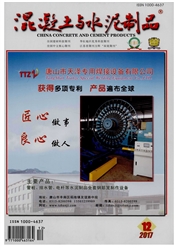

 中文摘要:
中文摘要:
采用梁式黏结试件,研究了钢筋锈蚀率、钢纤维体积率、混凝土的强度等级以及钢纤维混凝土腐蚀后疲劳黏结性能。试验结果表明,钢筋锈蚀水平低时,抗黏结疲劳能力有一定程度的提高,钢筋锈蚀水平程度增大时,抗黏结疲劳能力有所降低;随着钢纤维的掺入和混凝土强度的提高,钢筋与混凝土之间的抗黏结疲劳能力随之提高。通过用荷载-滑移量滞回曲线描述,得到了黏结疲劳损伤过程大致可分为三个阶段,即初始滑移量阶段、稳定发展阶段和迅速发展至破坏阶段;疲劳荷载作用下构件的黏结刚度逐渐退化;随着钢纤维掺量的增加,滞回环曲线形状更加饱满,表明纤维可以有效提高结构或构件的塑性变形能力。
 英文摘要:
英文摘要:
Using the beam adhesive specimens, the corrosion rate of steel, steel fiber volume ratio, strength grade of concrete and the bond performance of steel fiber reinforced concrete under the effects of corrosion and fatigue are studied.The results show that, the anti-adhesion fatigue is improved with the low level of steel corrosion, while anti-adhesion fatigue is decreased when the degree of reinforcement corrosion level is increased. By adding steel fiber and increasing the concrete strength, the properties of anti-adhesion fatigue between reinforced and concrete is increased. According to the fatigue load-slip hysteresis curve, the bonding process of fatigue damage of steel fibers can be divided into three stages,the rapid development stage of the initial slip, stable development stage of slip and failure stage of slip increased to destruction stage. The component of bond stiffness is degenerated gradually under the fatigue loading, the hysteresis loop becomes more plump with the increasing of steel fiber, the fiber can improve the plastic deformation ability of the structure or component effectively.
 同期刊论文项目
同期刊论文项目
 同项目期刊论文
同项目期刊论文
 期刊信息
期刊信息
